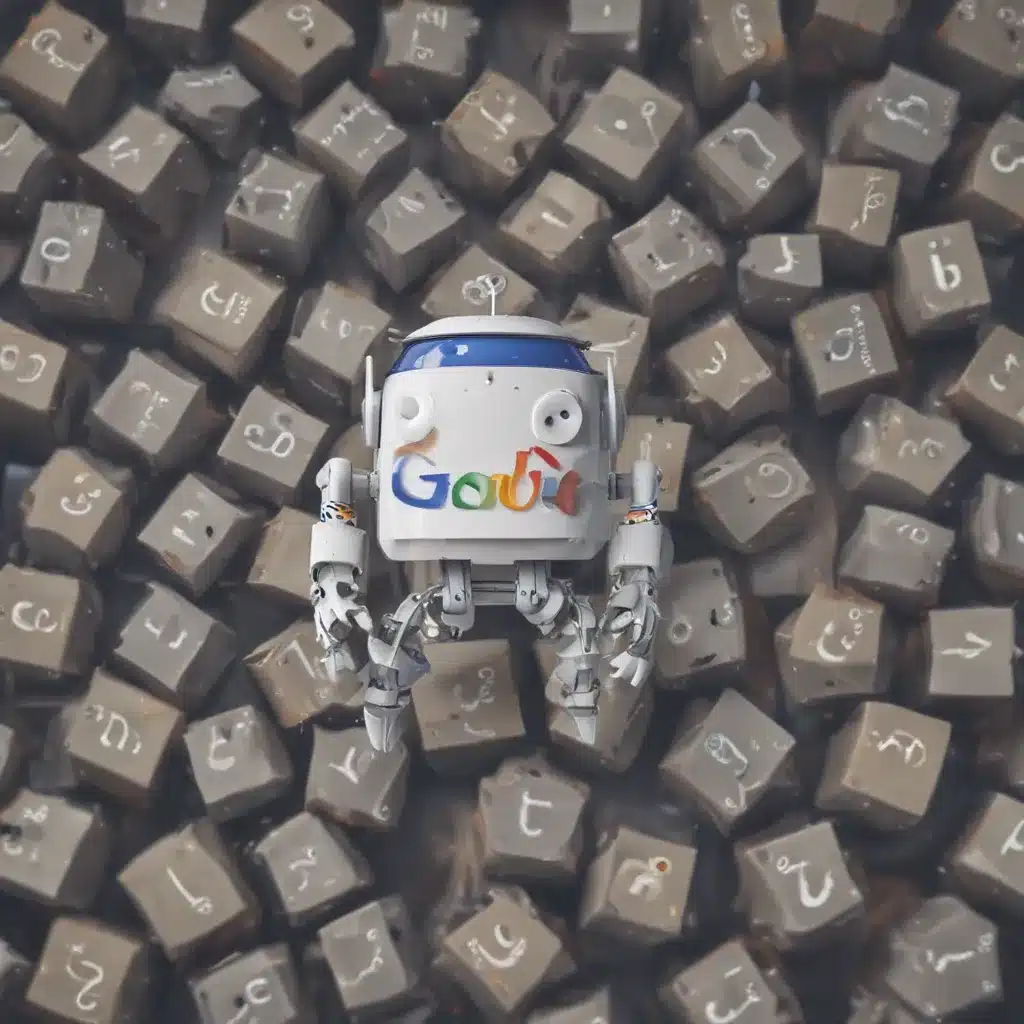
The Curious Case of Googlebot’s Appetite
Have you ever wondered how Google’s search engine manages to sift through the endless sea of web pages and surface the most relevant results? The secret lies in the tireless efforts of a little fellow known as Googlebot – the search engine’s crawling agent that scours the internet, munching on content like a ravenous cyber-caterpillar.
As an SEO professional, I’ve spent countless hours studying the intricate workings of Googlebot, and let me tell you, it’s a fascinating journey. You see, Googlebot is not just some mindless bot; it’s a highly sophisticated algorithm that’s constantly evolving, adapting to the ever-changing landscape of the web.
The Insatiable Appetite of Googlebot
The internet is a vast and rapidly expanding domain, with new content being created every second. Imagine trying to keep up with a never-ending buffet – that’s the challenge Googlebot faces on a daily basis. As the search engine’s representative, it’s tasked with the daunting job of finding and crawling as much of this content as possible, in order to maintain a comprehensive and up-to-date index.
But here’s the catch: Googlebot doesn’t have limitless resources. It has a finite number of servers, bandwidth, and processing power at its disposal. This means that Googlebot can only crawl a fraction of the available content on the internet, leaving the rest to languish in the depths of the web.
This, my friends, is where the concept of “crawl budget” comes into play. Crawl budget is the term used to describe the number of URLs that Googlebot can and wants to crawl within a given timeframe. It’s a delicate balance, and one that website owners need to understand and optimize for, if they want their content to be discovered and indexed by the search engine.
Optimizing Your Site for Googlebot’s Hunger
Think of it like this: Googlebot is like a hungry guest at a dinner party, and your website is the host. Your job is to make sure that the guest (Googlebot) can easily find and enjoy the most important dishes (your content) without getting lost in the labyrinth of your home (your website’s structure).
According to Google’s own advice, one of the key factors in optimizing your site for Googlebot’s crawling efforts is the structure and organization of your URLs. Complicated or redundant URLs can cause Googlebot to waste valuable time “tracing and retracing its steps,” while a straightforward, well-organized URL structure allows the bot to efficiently navigate your content.
But that’s just the tip of the iceberg. Other factors that influence your crawl budget include the overall health of your website (think page speed and server responsiveness), the popularity and authority of your domain, and the quality and freshness of your content.
Mastering the Art of Crawl Budget Optimization
Okay, let’s get down to the nitty-gritty. How can you, as an SEO professional, optimize your website’s crawl budget and ensure that Googlebot can find and index your most important content?
First and foremost, you need to conduct a thorough analysis of your website’s crawling and indexing performance. According to Google’s own guidance, one of the best ways to do this is by examining your site’s log files, which can provide valuable insights into Googlebot’s activity and the areas of your website that are being prioritized (or neglected) during the crawling process.
Armed with this information, you can then take a proactive approach to optimizing your crawl budget. This might involve:
- Improving page speed and server responsiveness: Faster-loading pages mean Googlebot can crawl more content in less time.
- Leveraging structured data and dynamic rendering: These techniques can help Googlebot better understand and index your content, even in the presence of complex JavaScript or CSS.
- Streamlining your URL structure: Eliminate redundant or confusing URLs, and make sure your internal linking structure is intuitive and user-friendly.
- Prioritizing high-value content: Focus on optimizing the pages that are most important to your business and target audience, rather than trying to optimize everything.
And of course, don’t forget to regularly submit and update your XML sitemap – this is a simple but effective way to help Googlebot discover and index your content more efficiently.
The Rewards of Optimizing for Googlebot
By mastering the art of crawl budget optimization, you’ll not only make life easier for Googlebot, but you’ll also reap the rewards in terms of improved search visibility, higher organic traffic, and better overall performance for your SEO agency in Manchester, UK.
Think about it this way: the more of your content Googlebot can discover and index, the more opportunities you have to rank for relevant searches and drive qualified leads to your website. It’s a win-win situation, both for you and for your clients.
So, the next time you catch yourself staring wistfully at the search engine results page, wondering how to get your content to the top, remember the curious case of Googlebot’s appetite. By understanding and optimizing for this unique little bot, you’ll be well on your way to dominating the SERPs and driving real, measurable results for your business.
And who knows, you might even stumble upon a few other fascinating tidbits about Googlebot’s inner workings along the way – after all, the more you know, the better you can serve your clients and take your SEO game to the next level.



























